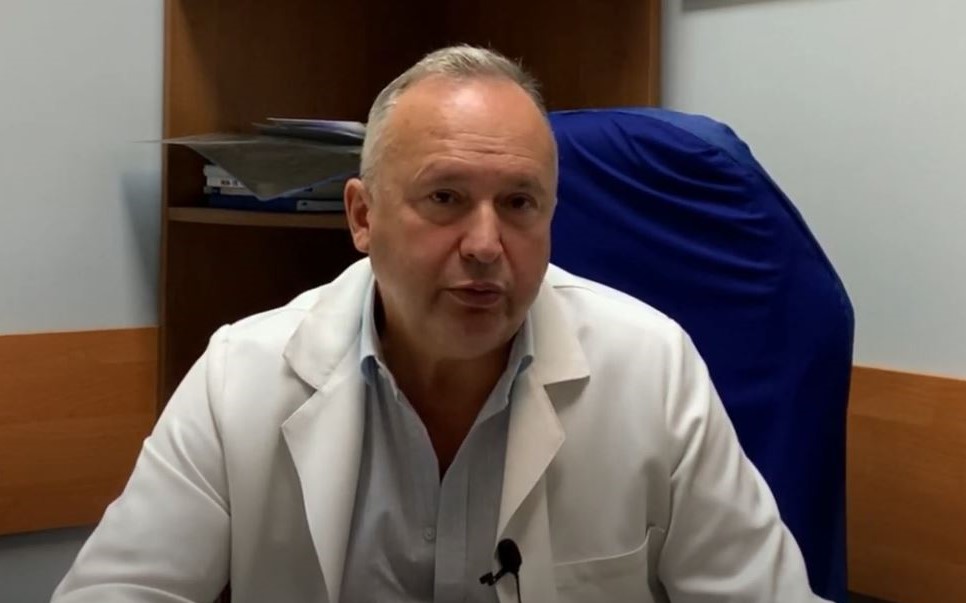Calls for Ukraine
Calls for Europe
Calls for USA

Alexander Glavatsky is a famous neuro-oncologist, neurosurgeon, and professor. The main direction of his medical activity is the treatment of brain tumors. In an interview for MedTour, he spoke about the latest trends and achievements of neuro-oncology in Ukraine.
Currently I work at the Neurosurgery Institute (an academic institute operating on the basis of the National Academy of Medical Sciences of Ukraine). Today it is the main medical institution that deals with neurosurgery issues in Ukraine.
The Neurosurgery Institute has modern equipment for neuroimaging diagnostics, including MRI machines with a magnetic field strength of 3 Tesla.
Help from MedTour! 3 Tesla MRI has a number of advantages over 1.5 Tesla magnetic resonance imaging. Some of its main advantages are:
We have the ability to perform MRI spectrography, MRI tractography, MRI perfusion, that is, to carry out diagnostics at the highest level. The Neurosurgery Institute is also equipped with a modern linear accelerator, allowing doctors to conduct radiation therapy..
I have been practicing neuro-oncology for over 40 years. During my practice, I independently performed several thousand surgical interventions for various types of brain diseases. These are not only malignant tumors, but also benign neoplasms. However, the priority of my activity is the study and treatment of cancerous brain tumors, since they pose the greatest danger to the health and life of the patient.
Our main difference lies in our desire to provide the patient with a full, complete cycle of treatment, which includes surgery, as well as all types of adjuvant therapy and neoadjuvant therapy (chemo/radiation therapy). Chemotherapy drugs are prescribed after studying the molecular profile of the tumor. If this is not done, treatment will be futile. In addition, this approach can significantly improve the quality and life expectancy of patients. We try to prescribe treatment individually in each case.
Our approach has achieved significant results. In recent years, we have more than 100 patients with the most aggressive forms of brain cancer (such as glioblastoma), whose life expectancy has exceeded 3, 5 and even 10 years. Only a few clinics in the world can boast of such experience.
Currently, we consider the use of dendritic cell vaccination to be one of the most promising approaches. At one time, we were impressed by the article of our American colleagues, written back in 2018. The use of dendritic cell vaccines allowed them to achieve very high quality of life and life expectancy for patients with glioblastomas. Therefore, we also decided to pay attention to this innovative area of medicine.
In collaboration with the Kavetsky Institute of Experimental Pathology, Oncology and Radiobiology, over the past three years we have also begun to use cancer vaccines. The first results are encouraging. We already have some experience and continue to work in this direction.
Since we actively use foreign quality standards, the level of modern Ukrainian oncology cannot be assessed lower than in the USA or Europe. Patients have different financial levels. Not everyone can afford treatment abroad. Therefore, with high quality, our medical care is more accessible.
We mainly come to patients with malignant glial brain tumors. This is a large group of neoplasms, which, according to the new 2021 classification, are called diffuse astrocytomas of various levels of anaplasia. The worst of these is glioblastoma (grade 4 wild-type anaplasia). However, there are tumors of this type that have certain molecular markers that allow oncologists to effectively fight them.
Currently, the priority areas in our institution, in addition to vascular surgery and surgery of traumatic brain injuries, are also neuro-oncology and neurosurgery. We have created a powerful team of highly qualified young doctors who are capable of performing long-term operations. Surgical interventions on the brain can last 5, 7, or 8 hours. I think the quality level of operations is very high.
The main method of treatment is surgical. If it is possible to remove the tumor while preserving vital areas of the brain, it should be removed. If this is not possible, for example, when the tumor is located in deep or functionally important structures of the brain, we perform a stereotactic biopsy. This allows us to study the molecular profile of the tumor and prescribe effective adjuvant therapy to prolong the patient’s life.
If everything is done correctly, the patient does not require any special rehabilitation program after surgery. The Institute’s neuroimaging equipment makes it possible to recognize the centers responsible for speech and movement and not damage them during the operation. Patients who have undergone tumor removal can walk, talk and care for themselves. Thanks to the development of neurosurgery, the risk of death during surgery is extremely low.
Previously, the survival rate after glioblastoma removal was only a year at best. We use all the latest advances in oncology to maximize the life expectancy of patients. Many of the operated patients are alive 10 years after the operation. Among the methods we use is dendritic cell vaccination. The use of cancer vaccines has allowed us to achieve good results in the treatment of glioblastomas, gliosarcomas, and grade 3 anaplastic gliomas. At the moment, Ukrainian-made vaccines are no different from their Western counterparts. And we continue to work in this direction.
Please rate the work of MedTour
